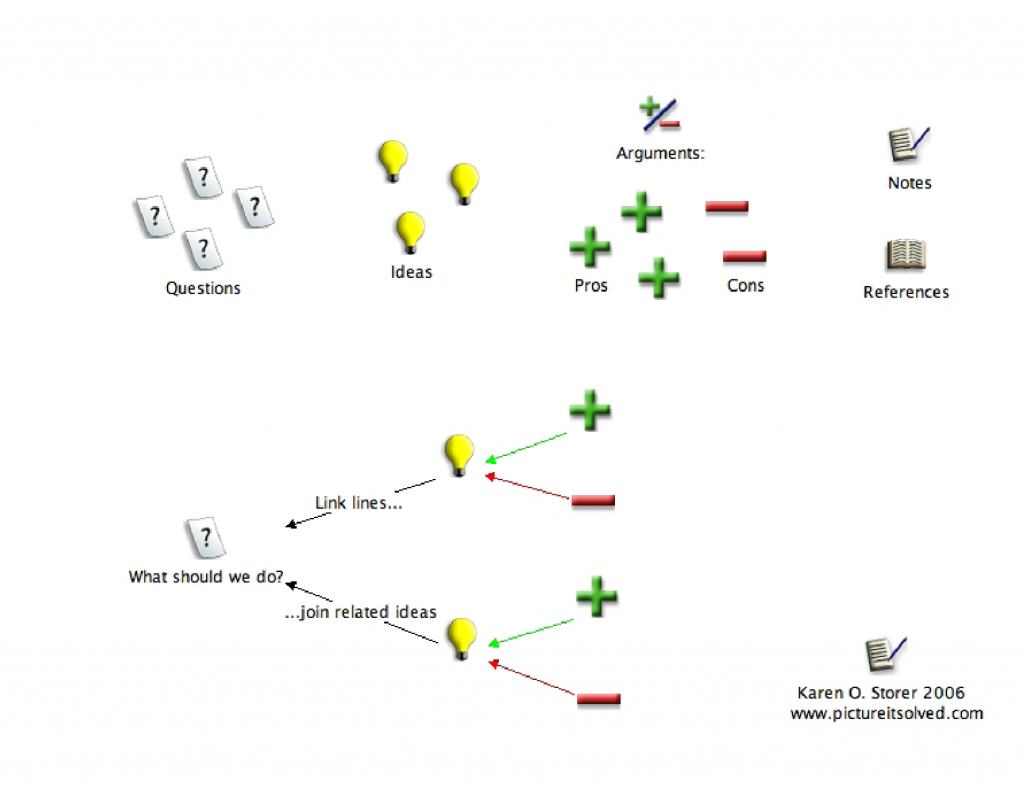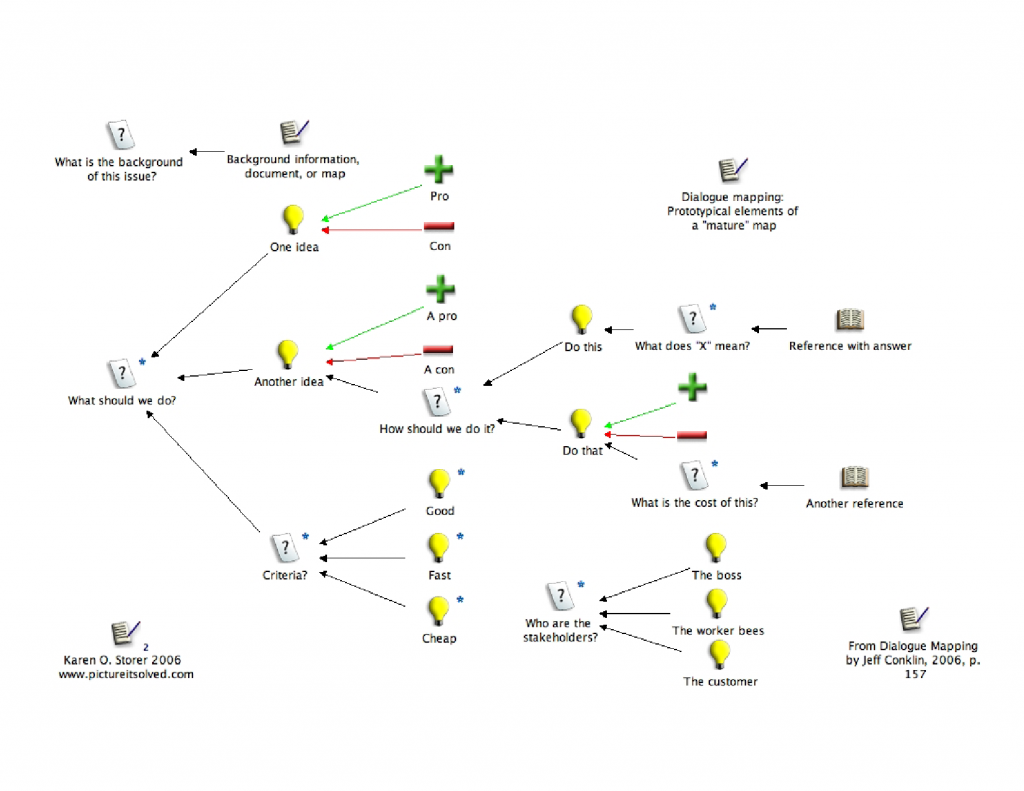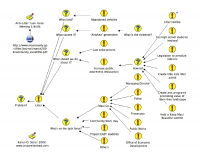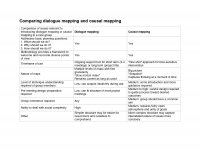What is dialogue mapping?
Dialogue mapping is a technique for diagramming meeting discussions. The three key elements are a facilitator who does the mapping, a shared display visible to all participants (preferably a screen and bright computer projector), and a simple graphical “language”, called IBIS (Issue Based Information System), for representing the discussion.
Most project meetings are about trying to design something or solve some problem. The IBIS grammar is designed specifically to capture those types of discussions. All design problems are unique, but discussion about them revolves around understanding the problem situation, proposing solutions or pieces of solutions, and evaluating how well the solutions fit the problem. The corresponding three main elements of IBIS are thus questions, ideas (or answers), and arguments (pros and cons). This grammar is simple enough to be used in the course of regular meetings, but powerful enough to capture a group’s thinking.
What is dialogue mapping good for?
The dialogue mapping technique has benefits both immediately, during a meeting, and over the long term of a project. In a meeting, the shared display provides a central focus for the group, helping keep discussions on track. Entering people’s questions, ideas, and critiques on the map assures each speaker that they have been heard, and provides a distance between an idea and its originator, smoothing the sometimes problematic interpersonal dynamics on a team–the team responds to and evaluates the idea, rather than person who proposed it. Design discussions can be wide ranging, seeming to go off topic as the group considers systemic aspects of their problem. All such diversions can be captured in a dialogue map, and the relationship made visible to all, and yet the group can return to the main topic. As individuals, we can only keep a few ideas in our short term memory at once (the well-known 7 plus or minus 2). In typical meetings, far more topics come up than that, and each individual is likely to focus on a different subset, leading to disjointed discussions, or side meetings within a main meeting. Dialogue mapping keeps all the ideas visible, making it clear when an issue is still open, or whether it has been thoroughly addressed.
Over the course of a project, dialogue maps serve as a group’s long term memory. When a meeting seems to be rehashing an old subject, the relevant map can be brought up to resolve the issue, or it can be edited if there is new thinking about the subject. A group can see whether they’ve addressed all aspects of a problem, or if some areas have been neglected. They can examine the rationale of a decision, and explain it to others. If someone misses a meeting, it’s easy to see what happened, get back up to speed, and possibly add new ideas. The software tool, Compendium, uses a built-in database so all types of project documents can be referenced on a map and brought up instantly.
- Dialogue map based on an article announcing a meeting of an anti-litter task force
- Table comparing dialogue mapping and causal mapping
The greatest benefit of dialogue mapping is that the process, through building the team’s shared understanding of the problem and possible solutions, builds their shared commitment to implementing a solution. Along the way, they develop a better understanding of the true problem scope, skills for working together effectively, and appreciation for the perspective and contribution of others on the team. All of this can contribute to developing a true learning organization which can be effective and resilient in future challenges.
What are some examples of dialogue mapping?
A prototypical dialogue mapping session (Chapter 3 in Conklin’s book)
How dialogue mapping was used on a software development project
See the Anti-litter Task Force page on this site for more examples of dialogue maps.
Where can I learn more about dialogue mapping?
Click on any of the images on this page for examples on this site.
Websites
Dialogue mapping description, room arrangement, typical map, and benefits
Compendium, the free software tool for building dialogue maps
Books
Dialogue Mapping: Building Shared Understanding of Wicked Problems, Jeff Conklin, 2006, John Wiley & Sons, Chichester, West Sussex, England




